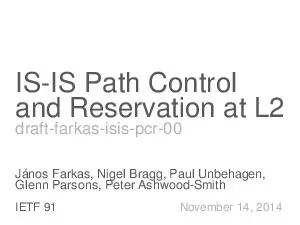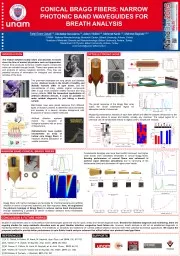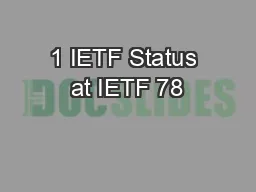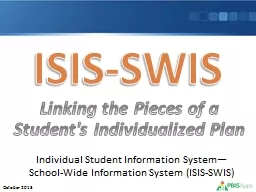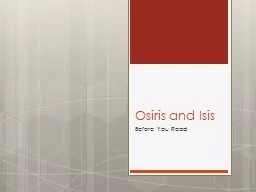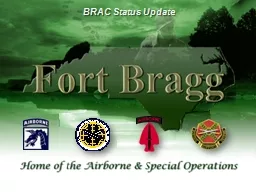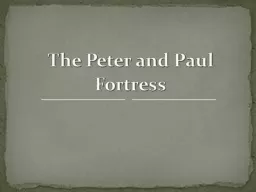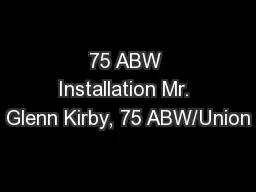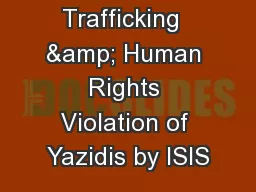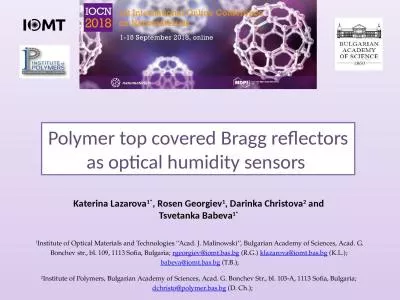PDF-ISIS Path Control and Reservation at L draftfarkasisispcr Jnos Farkas Nigel Bragg Paul
Author : test | Published Date : 2014-12-13
1aq specifies SPB operation details SPB establishes Shortest Path Trees SPTs in order to provide the connectivity for unicast and multicast traffic within a Layer
Presentation Embed Code
Download Presentation
Download Presentation The PPT/PDF document "ISIS Path Control and Reservation at L d..." is the property of its rightful owner. Permission is granted to download and print the materials on this website for personal, non-commercial use only, and to display it on your personal computer provided you do not modify the materials and that you retain all copyright notices contained in the materials. By downloading content from our website, you accept the terms of this agreement.
ISIS Path Control and Reservation at L draftfarkasisispcr Jnos Farkas Nigel Bragg Paul: Transcript
Download Rules Of Document
"ISIS Path Control and Reservation at L draftfarkasisispcr Jnos Farkas Nigel Bragg Paul"The content belongs to its owner. You may download and print it for personal use, without modification, and keep all copyright notices. By downloading, you agree to these terms.
Related Documents

